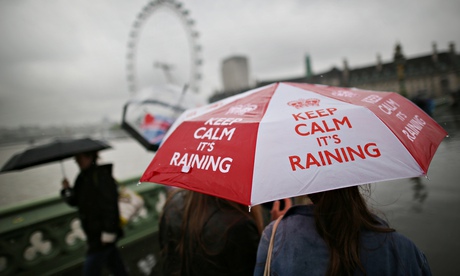(The Guardian 26/9/2014) From genocide and kamikaze to radar and spam, the second world war had a dramatic effect on English
War: the mother of invention. The phrase (a tweak of the proverb “necessity is the mother of invention”) refers to military technology. But a new book demonstrates how it is also true of language.
The Word at War: World War Two in 100 Phrases is by Philip Gooden and Peter Lewis, who brought us the fascinating Idiomantics – a thrill-a-page tour of international idioms.
Next year marks the 70th anniversary of the end of the second world war. It changed the way we think but also, the book demonstrates, the way we speak.
The neologisms with which the second world war enriched our language range from the utilitarian to the racy: “The heightened conditions of warfare provide a boost to the human propensity to use jargon, slang and bad language,” the authors say. “In warfare, the new and unfamiliar require fresh terminology, while fear and frustration provide plenty of excuse for (often surprisingly detailed and inventive) cusswords.”
Spam is a portmanteau of “spiced ham” and, developed in 1937, became popular warfare tucker for the ration-starved masses owing to its long shelf life. It was mocked for its gristly taste and has since become a byword for “omnipresent, instantly forgettable crap” which is why our unwanted emails can be traced back to this wartime foodie portmanteau. Disparaging terms for gross food were common. “Shit on a shingle” was minced beef on toast. Italians were issued with canned “sinewy slop” emblazoned with the words Amministrazione Militare, but they used the initials to nickname it asino morto (dead donkey) or the racist arabo morto(dead Arab).
Among the new words that the 1939-45 war gave English are some borrowed from our enemies: kamikaze (the pilots that launched suicidal attacks – from the Japanese for “divine wind”); flak (an abbreviation ofFliegerabwehrkanone – “pilot defence gun”) and ersatz (from the German for “compensation or replacement”). Meanwhile, the prefix mega comes from the measurement of bombs (one megaton = one million tons of TNT). The unique enormity of wartime atrocities resulted in the gravest of neologisms: a new word would be needed to adequately reflect the scale and in 1944 the Sunday Times reported: “The United Nations’ indictment of 24 Nazi leaders has brought a new word into the language – genocide.”
On a lighter note, there’s the word borrowed by a car manufacturer for its brand: Jeep derives from the initialism GP (general purpose) – used to describe the unrestricted function of a vehicle, reduced to a single-syllable word (say GP very fast). Other acronyms have also endured: radar is a US coinage from 1940, taken from the initial letters of “radio detection and ranging”. RDF – the British equivalent initialism – was quickly replaced by the catchier acronym. Others were simply inventive in their time: the pipeline laid under the Channel to convey petrol to France after D-day was called Pluto (pipeline under the ocean). Some initialisms were far from catchy: the US Commander of the Amphibious Force in the South Pacific was known as the Mary Poppinsesque COMAMPHIBFORSOPAC.
Acronyms captured war’s normalising of chaos: the American Snafu, Fubar and Susfu were colloquial code for, respectively, “situation normal, all fucked up”; “fucked up beyond all recognition”; and “situation unchanged, still fucked up”. They also played a key role in epistolary romance, from Italy (“I trust and love you”) and Holland (“here our love lies and never dies”) to Burma (“be undressed ready, my angel”) and Norwich (“[k]nickers off ready when I come home”).
The second world war is also responsible for the mugs, tea towels and numerous other souvenirs telling us to Keep Calm and Carry On. As Gooden and Lewis point out, the irony is that the original Keep Calm poster “never saw the light of day” – 2.5m copies were printed by the Ministry of Information but it decided not to use them because people had grown weary of “the strident voice of officialdom”. The redundant morale-booster was resurrected by a Northumberland book shop in 2000; the rest is history. The writers praise it for reflecting the phlegmatic British spirit when faced with adversity but also for revealing “an admirable ingrained aversion to being told what to do by bumptious bureaucrats”.
The glaring oxymorons of war reflect its ultimate futility. We still see this today with insidiously dehumanising euphemisms such as “collateral damage”. The Nazis surpassed themselves here: feierabendgestaltung(leisure time structuring) and sprachregelung (prescribed terminology) underscore how deluded and controlling they were. The title of Martin Amis’s new Holocaust novel, The Zone of Interest, was another disgusting euphemism – for Auschwitz.
Gary Nunn is a regular contributor to Mind your language. His posts appears on the last Friday of every month. Twitter: @GaryNunn1

Sign up for
